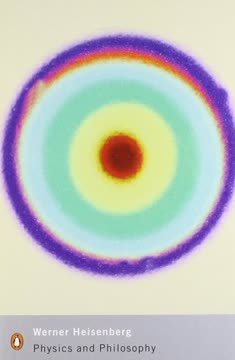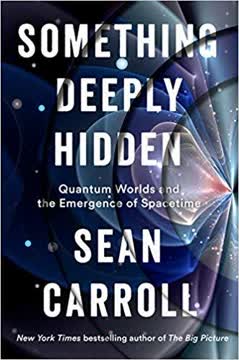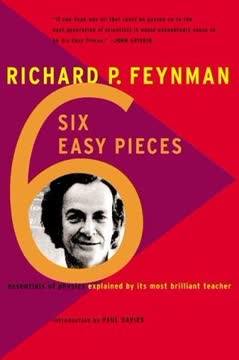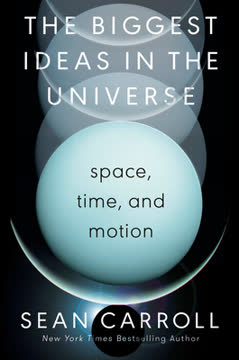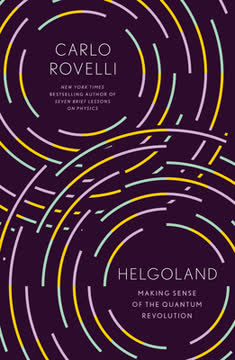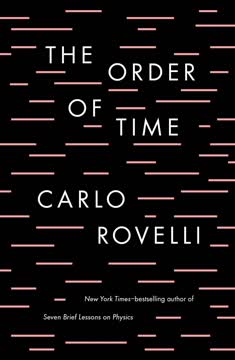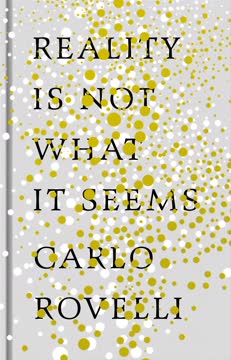نکات کلیدی
1. چالشهای مکانیک کوانتومی در درک واقعیت
واقعیت به یک بازی آینهها تبدیل شده است.
نظریه کوانتوم فیزیک کلاسیک را در هم میشکند. کشف مکانیک کوانتومی در اوایل قرن بیستم به طور بنیادی درک ما از جهان فیزیکی را به چالش کشید. این نظریه نشان داد که در سطح میکروسکوپی، واقعیت به شیوههایی رفتار میکند که با شهود و تجربیات روزمره ما در تضاد است.
پدیدههای کلیدی کوانتومی:
- همپوشانی: اشیاء میتوانند به طور همزمان در چندین حالت وجود داشته باشند.
- دوگانگی موج-ذره: ماده و نور هر دو ویژگیهای موجی و ذرهای را نشان میدهند.
- اصل عدم قطعیت: اندازهگیری دقیق برخی از کمیتهای جفتشده (مانند موقعیت و تکانه) غیرممکن است.
- درهمتنیدگی کوانتومی: ذرات میتوانند به طور آنی در فواصل وسیع با یکدیگر مرتبط باشند.
این مفاهیم ما را وادار میکنند تا دوباره به مفاهیم خود از تعیینگرایی، محلی بودن و ماهیت واقعیت فیزیکی فکر کنیم. جهان کوانتومی تصادفی، به هم پیوسته و اغلب غیر شهودی است و منجر به بحثهای مداوم درباره تفسیر و پیامدهای آن برای درک ما از جهان میشود.
2. تولد نظریه کوانتوم: کشف هایزنبرگ
به شدت متزلزل شدم. آنقدر مضطرب بودم که نمیتوانستم بخوابم. از خانه خارج شدم و به آرامی در تاریکی قدم زدم. بر روی سنگی که مشرف به دریا بود در نوک جزیره نشستم و منتظر طلوع خورشید شدم...
افشای جزیره هایزنبرگ. در سال 1925، ورنر هایزنبرگ 23 ساله به جزیره دورافتاده هلگولند در دریای شمال پناه برد تا با رفتار معماگونه اتمها دست و پنجه نرم کند. در حالی که با تب یونجه دست و پنجه نرم میکرد و به دنبال تنهایی بود، او به کشفی دست یافت که فیزیک را متحول کرد.
جنبههای کلیدی رویکرد هایزنبرگ:
- تمرکز صرف بر کمیتهای قابل مشاهده و رد مدارهای الکترونی غیرقابل مشاهده.
- جایگزینی متغیرهای کلاسیک با ماتریسها (جدولهای عددی).
- معرفی مفهوم "پرشهای کوانتومی" بین حالتهای انرژی.
این رویکرد جدید رادیکال، که بعداً به مکانیک ماتریسی توسعه یافت، چارچوب ریاضی برای توصیف پدیدههای اتمی فراهم کرد که فیزیکدانان را سردرگم کرده بود. کار هایزنبرگ، به همراه مشارکتهای بورن، یوردن و دیراک، پایهگذار نظریه کوانتوم مدرن شد و منجر به دریافت جوایز نوبل و نوآوریهای تکنولوژیکی در دهههای بعدی گردید.
3. دوگانگی موج-ذره و احتمال در فیزیک کوانتومی
استحکام دیدگاه کلاسیک از جهان چیزی جز نزدیکبینی خود ما نیست. قطعیتهای فیزیک کلاسیک فقط احتمالات هستند.
معادله موج شرودینگر. در سال 1926، اروین شرودینگر یک فرم جایگزین از مکانیک کوانتومی بر اساس تابعهای موج توسعه داد. این رویکرد، در حالی که از نظر ریاضی معادل مکانیک ماتریسی هایزنبرگ بود، تصویر شهودیتری از پدیدههای کوانتومی ارائه میداد.
مفاهیم کلیدی در مکانیک موج:
- حالتهای کوانتومی توصیف شده توسط تابعهای موج (ψ).
- تفسیر احتمالی: |ψ|² چگالی احتمال یافتن یک ذره در یک مکان خاص را میدهد.
- آزمایش فکری گربه شرودینگر: طبیعت پارادوکسیکال همپوشانی کوانتومی را نشان میدهد.
دوگانگی موج-ذره ماده و نور، که در مرکز نظریه کوانتوم قرار دارد، مفاهیم کلاسیک ما از ذرات و امواج متمایز را به چالش میکشد. این ماهیت احتمالی مکانیک کوانتومی، که در آن نتایج قطعی تنها با اندازهگیری ظاهر میشوند، همچنان منبعی از بحثهای فلسفی و تحقیق علمی باقی میماند.
4. تفسیر رابطهای مکانیک کوانتومی
ویژگیهای یک شیء، نحوه عمل آن بر روی اشیاء دیگر است؛ واقعیت این شبکه تعاملات است.
واقعیت به عنوان روابط. تفسیر رابطهای مکانیک کوانتومی، که در دهه 1990 توسعه یافت، پیشنهاد میکند که ویژگیهای اشیاء کوانتومی تنها در ارتباط با اشیاء دیگر وجود دارند. این دیدگاه بسیاری از پارادوکسهای نظریه کوانتوم را با کنار گذاشتن مفهوم حقایق مطلق و مستقل از ناظر حل میکند.
جنبههای کلیدی تفسیر رابطهای:
- ویژگیها از طریق تعاملات بروز میکنند و ذاتی اشیاء نیستند.
- هیچ مجموعه جهانی از حقایق وجود ندارد؛ حقایق نسبی به چارچوبهای مرجع خاص هستند.
- حالت کوانتومی (ψ) همیشه یک حالت نسبی است.
این تفسیر با زمینهمندی مشاهده شده در آزمایشهای کوانتومی همراستا است و راهی برای درک پدیدههای کوانتومی بدون اتکا به متغیرهای پنهان یا جهانهای چندگانه ارائه میدهد. این دیدگاه واقعیتی را پیشنهاد میکند که از یک شبکه تعاملات و دیدگاهها بافته شده است، نه اینکه از موجودات مستقل با ویژگیهای ذاتی تشکیل شده باشد.
5. درهمتنیدگی: رقص سهگانه در واقعیت کوانتومی
درهمتنیدگی رقصی برای دو شریک نیست، بلکه رقصی برای سه نفر است.
اتصالات کوانتومی. درهمتنیدگی، پدیدهای که در آن ذرات در فواصل وسیع با یکدیگر مرتبط میمانند، یکی از پیچیدهترین جنبههای مکانیک کوانتومی است. این پدیده مفاهیم ما از محلی بودن را به چالش میکشد و به طور تجربی در فواصل هزاران کیلومتر تأیید شده است.
درک درهمتنیدگی:
- ویژگیهای مرتبط بین ذرات دوردست.
- هیچ توضیح کلاسیکی (متغیرهای پنهان) نمیتواند ارتباطات مشاهده شده را توجیه کند.
- نیاز به یک شیء سوم برای بروز و تأیید ارتباطات.
تفسیر رابطهای دیدگاه منحصر به فردی درباره درهمتنیدگی ارائه میدهد و آن را به عنوان یک رقص سهنفره شامل ذرات درهمتنیده و سیستمی که همبستگی آنها را مشاهده میکند، میبیند. این رویکرد پارادوکسهای ظاهری را بدون استناد به ارتباطات سریعتر از نور یا ویژگیهای از پیش تعیینشده حل میکند و بر ماهیت رابطهای واقعیت کوانتومی تأکید میکند.
6. نظریه کوانتوم درک ما از ماده و ذهن را متحول میکند
اگر ما به جای اشیاء مستقل، به فرآیندها و رویدادها و ویژگیهای نسبی فکر کنیم، فاصله بین پدیدههای فیزیکی و پدیدههای ذهنی بسیار کمتر خواهد بود.
پل زدن بین فیزیک و آگاهی. بازنگری رادیکال نظریه کوانتوم از واقعیت فیزیکی راههای جدیدی برای نزدیک شدن به مشکلات فلسفی دیرینه، از جمله رابطه بین ذهن و ماده ارائه میدهد. در حالی که مکانیک کوانتومی به طور مستقیم آگاهی را توضیح نمیدهد، اما شرایط بحث را تغییر میدهد.
پیامدها برای رابطه ذهن و ماده:
- واقعیت به عنوان یک شبکه از روابط به جای اشیاء مستقل.
- ویژگیها تنها از طریق تعاملات وجود دارند.
- دیدگاه و زمینه در توصیف فیزیکی بنیادی هستند.
این دیدگاه رابطهای از واقعیت، تمایز بین پدیدههای ذهنی و فیزیکی را محو میکند و پیشنهاد میکند که هر دو میتوانند به عنوان فرآیندهای طبیعی پیچیدهای که از تعاملات ناشی میشوند، درک شوند. در حالی که این نظریه مشکل سخت آگاهی را حل نمیکند، اما چارچوبی برای بازنگری در ماهیت ماده، ذهن و رابطه آنها فراهم میکند.
7. جهان به عنوان یک شبکه از تعاملات و دیدگاهها
ما از چنین موادی ساخته شدهایم/که رویاها بر آن بنا شدهاند و زندگی کوچک ما/با خوابی گرداگرد میشود.
چشمانداز جدیدی از واقعیت. نظریه کوانتوم جهانی را ارائه میدهد که به شدت از جهان محکم و تعیینگرای فیزیک کلاسیک فاصله دارد. در عوض، واقعیتی را نشان میدهد که از رویدادها، تعاملات و دیدگاهها تشکیل شده است، جایی که ویژگیها از طریق روابط بروز میکنند و نه اینکه به طور مستقل وجود داشته باشند.
جنبههای کلیدی این دیدگاه کوانتومی:
- هیچ حقیقت مطلق و مستقل از ناظر وجود ندارد.
- واقعیت به عنوان یک شبکه از رویدادها و تعاملات نسبی.
- اهمیت زمینه و دیدگاه در درک پدیدهها.
این دیدگاه از جهان، در حالی که در ابتدا گیجکننده است، راهی عمیق و زیبا برای درک واقعیت ارائه میدهد. این دیدگاه بر همپیوندی، نقش ناظر و محدودیتهای شهود کلاسیک ما تأکید میکند. با پذیرش این دیدگاه کوانتومی، ما درک عمیقتری از ماهیت ظریف و رابطهای جهان و جایگاه خود در آن به دست میآوریم.
آخرین بهروزرسانی::
FAQ
What's "Helgoland: Making Sense of the Quantum Revolution" about?
- Exploration of Quantum Theory: The book delves into the development and implications of quantum theory, focusing on its foundational aspects and the revolutionary ideas it introduced.
- Historical Context: It provides a historical narrative, starting with Werner Heisenberg's groundbreaking work on the island of Helgoland, which laid the groundwork for quantum mechanics.
- Philosophical Implications: The book examines the philosophical questions raised by quantum mechanics, such as the nature of reality and the role of the observer.
- Relational Interpretation: Rovelli introduces and advocates for the relational interpretation of quantum mechanics, which suggests that the properties of objects are not absolute but exist only in relation to other objects.
Why should I read "Helgoland: Making Sense of the Quantum Revolution"?
- Understanding Quantum Mechanics: The book offers a clear and accessible explanation of quantum mechanics, making it suitable for readers unfamiliar with the subject.
- Philosophical Insights: It provides deep philosophical insights into the nature of reality, challenging traditional notions of objectivity and determinism.
- Historical Perspective: Readers gain an understanding of the historical development of quantum theory and the key figures involved in its evolution.
- Innovative Ideas: Rovelli presents innovative ideas, such as the relational interpretation, which can change how we perceive the world and our place in it.
What are the key takeaways of "Helgoland: Making Sense of the Quantum Revolution"?
- Quantum Mechanics' Strangeness: Quantum mechanics challenges our classical understanding of reality, introducing concepts like superposition and entanglement.
- Relational Reality: The relational interpretation suggests that properties of objects are not inherent but depend on their interactions with other objects.
- Philosophical Implications: The book explores the philosophical implications of quantum mechanics, questioning the nature of reality and the role of the observer.
- Historical and Scientific Context: It provides a comprehensive overview of the historical and scientific context of quantum theory's development.
What are the best quotes from "Helgoland: Making Sense of the Quantum Revolution" and what do they mean?
- "It’s as if reality … didn’t exist …": This quote reflects the bewilderment and philosophical challenge posed by quantum mechanics, questioning the very nature of reality.
- "The world is a perspectival game, a play of mirrors that exist only as reflections of and in each other.": This highlights the relational interpretation, suggesting that reality is not absolute but depends on perspectives and interactions.
- "The solidity of the classical vision of the world is nothing other than our own myopia.": Rovelli emphasizes that our classical understanding of the world is limited and that quantum mechanics offers a more nuanced view.
- "We are such stuff as dreams are made on, and our little life is rounded with a sleep.": This Shakespearean quote underscores the ephemeral and interconnected nature of reality as seen through the lens of quantum mechanics.
How does Carlo Rovelli explain quantum superposition in "Helgoland"?
- Concept of Superposition: Rovelli explains that quantum superposition allows particles to exist in multiple states simultaneously, a concept that defies classical logic.
- Interference Patterns: He illustrates superposition through interference patterns, where particles like photons exhibit behavior that suggests they take multiple paths at once.
- Observer's Role: The act of observation collapses the superposition, forcing the particle into a single state, highlighting the observer's role in determining reality.
- Philosophical Implications: This concept challenges our understanding of reality, suggesting that what we perceive is not an absolute truth but a result of interactions.
What is the relational interpretation of quantum mechanics as discussed in "Helgoland"?
- Relational Properties: Rovelli's relational interpretation posits that the properties of objects are not absolute but exist only in relation to other objects.
- Observer Independence: It challenges the notion of an objective reality independent of observation, suggesting that reality is a network of interactions.
- Philosophical Shift: This interpretation shifts the philosophical understanding of reality from a substance-based view to one based on relations and interactions.
- Implications for Science: It has profound implications for how we conduct and interpret scientific experiments, emphasizing the role of context and interaction.
How does "Helgoland" address the concept of entanglement?
- Definition of Entanglement: Entanglement is described as a phenomenon where particles remain connected, such that the state of one instantly influences the state of another, regardless of distance.
- Experimental Evidence: Rovelli discusses experiments that demonstrate entanglement, such as those involving photons sent to distant locations yet showing correlated behaviors.
- Challenges Classical Physics: Entanglement defies classical physics' notion of locality and separability, suggesting a deeper interconnectedness in the quantum realm.
- Relational Perspective: From a relational viewpoint, entanglement exemplifies how properties and states are not intrinsic but arise from interactions.
What role does Werner Heisenberg play in "Helgoland"?
- Pioneering Work: Heisenberg is central to the narrative as the pioneer who developed the matrix mechanics formulation of quantum mechanics.
- Helgoland's Significance: His time on the island of Helgoland is portrayed as a pivotal moment where he conceived ideas that would revolutionize physics.
- Philosophical Impact: Heisenberg's work raises philosophical questions about the nature of reality and observation, themes that Rovelli explores throughout the book.
- Legacy in Quantum Theory: Heisenberg's contributions are foundational to the development of quantum mechanics and continue to influence contemporary interpretations.
How does "Helgoland" explore the philosophical implications of quantum mechanics?
- Nature of Reality: The book delves into how quantum mechanics challenges traditional notions of reality, suggesting a world of interactions rather than fixed entities.
- Observer's Role: It examines the role of the observer in determining the state of quantum systems, questioning the objectivity of reality.
- Relational Ontology: Rovelli introduces a relational ontology, where the existence and properties of objects are contingent on their interactions with other objects.
- Broader Implications: These philosophical insights have broader implications for understanding consciousness, knowledge, and the nature of existence.
What historical context does "Helgoland" provide about the development of quantum mechanics?
- Early 20th Century: The book situates the development of quantum mechanics in the early 20th century, a period of significant scientific upheaval.
- Key Figures: It highlights the contributions of key figures like Heisenberg, Bohr, and Schrödinger, who played crucial roles in formulating quantum theory.
- Scientific Revolution: Rovelli portrays quantum mechanics as a scientific revolution that fundamentally altered our understanding of the physical world.
- Cultural and Philosophical Influences: The narrative also touches on the cultural and philosophical influences that shaped the thinking of these pioneering scientists.
How does Carlo Rovelli address the concept of probability in quantum mechanics in "Helgoland"?
- Probabilistic Nature: Rovelli explains that quantum mechanics introduces a probabilistic element to the behavior of particles, contrasting with deterministic classical physics.
- Born's Interpretation: He discusses Max Born's interpretation of the wave function as a tool for calculating probabilities, not certainties.
- Implications for Reality: This probabilistic nature challenges the notion of a predictable, deterministic universe, suggesting a more fluid and uncertain reality.
- Philosophical Questions: The concept of probability raises philosophical questions about causality, free will, and the nature of knowledge.
What is the significance of the title "Helgoland" in Carlo Rovelli's book?
- Historical Reference: The title refers to the island of Helgoland, where Werner Heisenberg developed key ideas that led to the formulation of quantum mechanics.
- Symbolic Meaning: Helgoland symbolizes the isolation and contemplation that often accompany groundbreaking scientific discoveries.
- Pivotal Moment: The island represents a pivotal moment in the history of science, where traditional views of reality were challenged and transformed.
- Personal Journey: For Rovelli, Helgoland also signifies a personal journey into the depths of quantum theory and its philosophical implications.
نقد و بررسی
کتاب هلگولند بهخاطر توضیحات قابلفهمش در زمینهی فیزیک کوانتومی و تفسیر رابطهای روولی، عمدتاً نقدهای مثبتی دریافت کرده است. خوانندگان از سبک نوشتاری واضح روولی و توانایی او در انتقال ایدههای پیچیده قدردانی میکنند. برخی از بخشهای فلسفی کتاب را کمتر جذاب میدانند یا احساس میکنند که کتاب خیلی کوتاه است. بسیاری از خوانندگان به دیدگاه منحصر به فرد روولی و ادغام علم با فلسفه و تفکر شرقی او اشاره میکنند. منتقدان خاطرنشان میکنند که این کتاب ممکن است برای افرادی که زمینهی فیزیک ندارند، چالشبرانگیز باشد و برخی توضیحات میتوانستند جزئیتر باشند.
Similar Books
